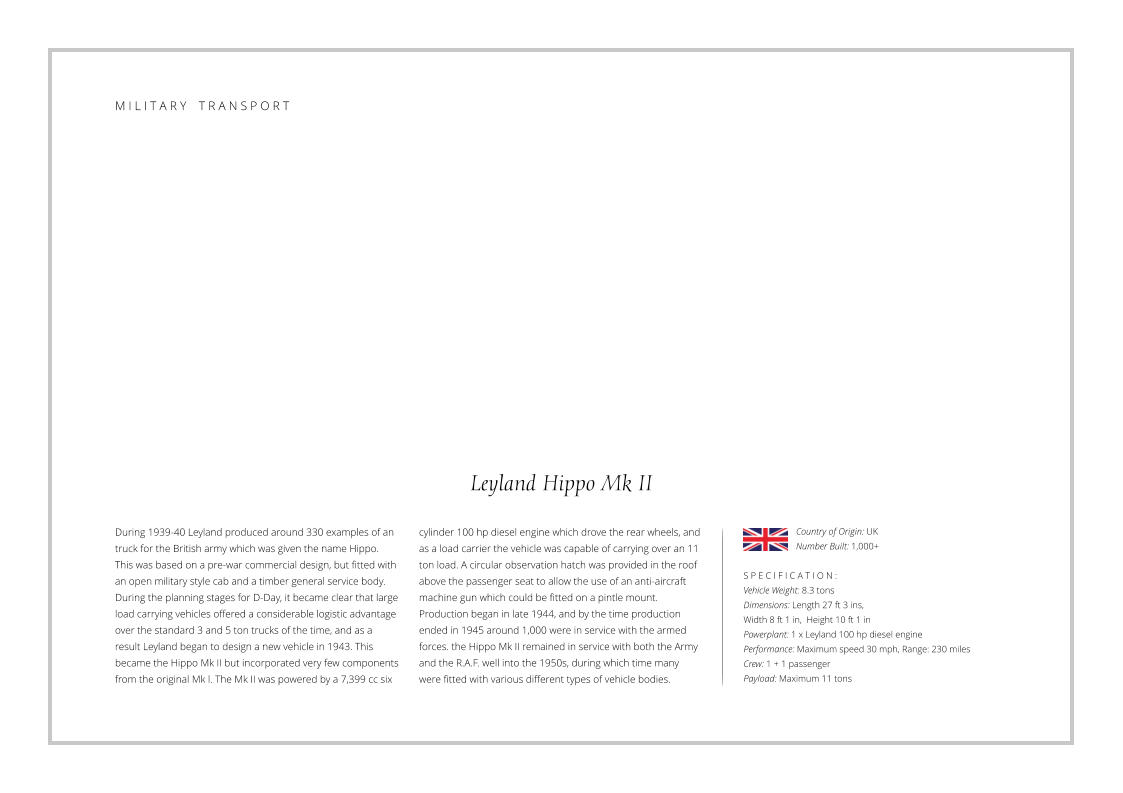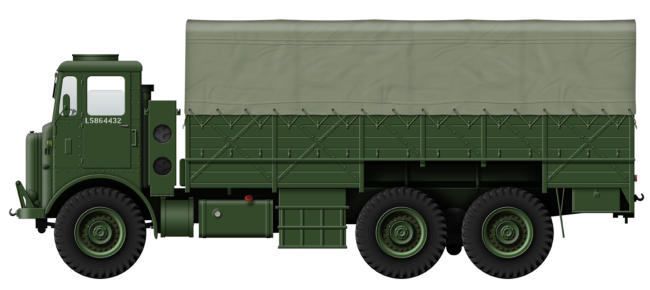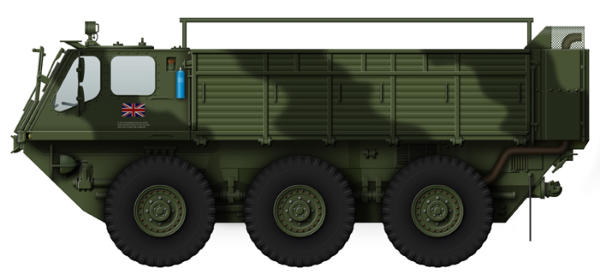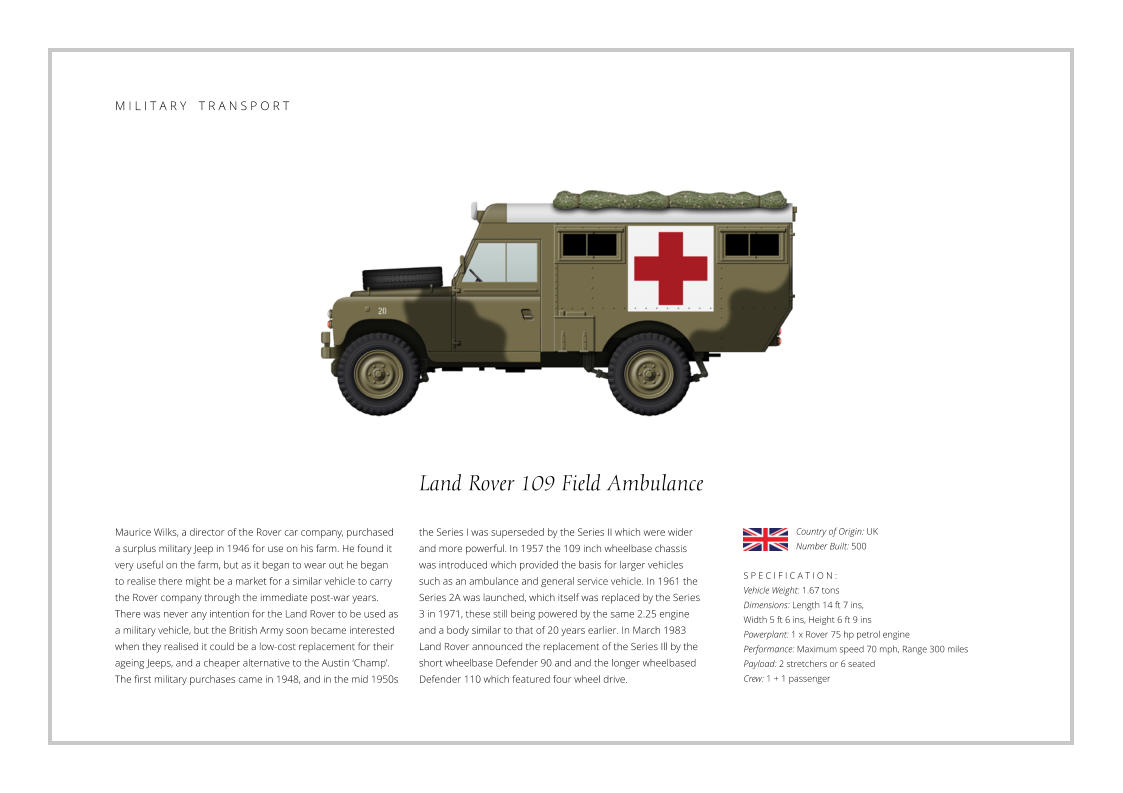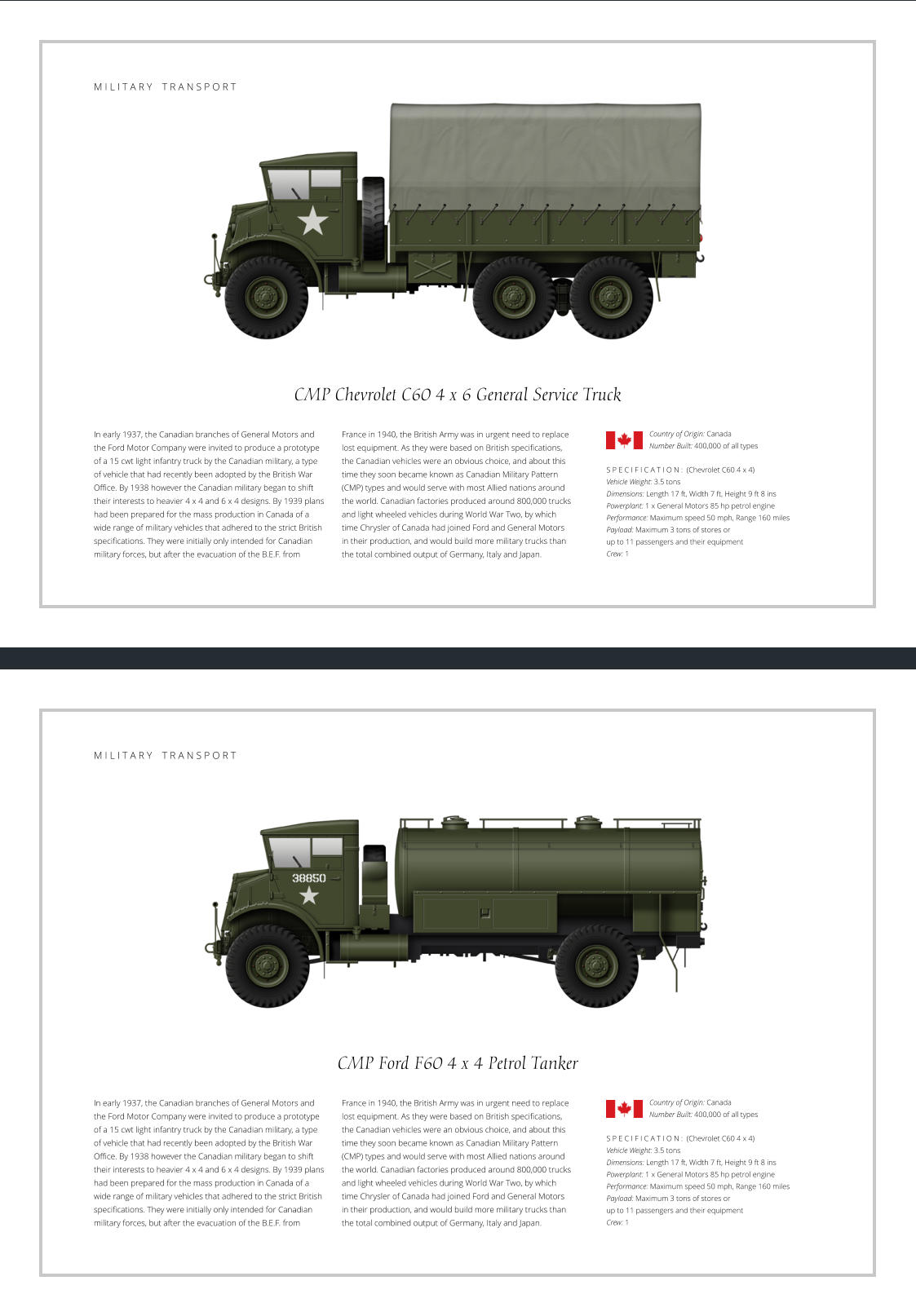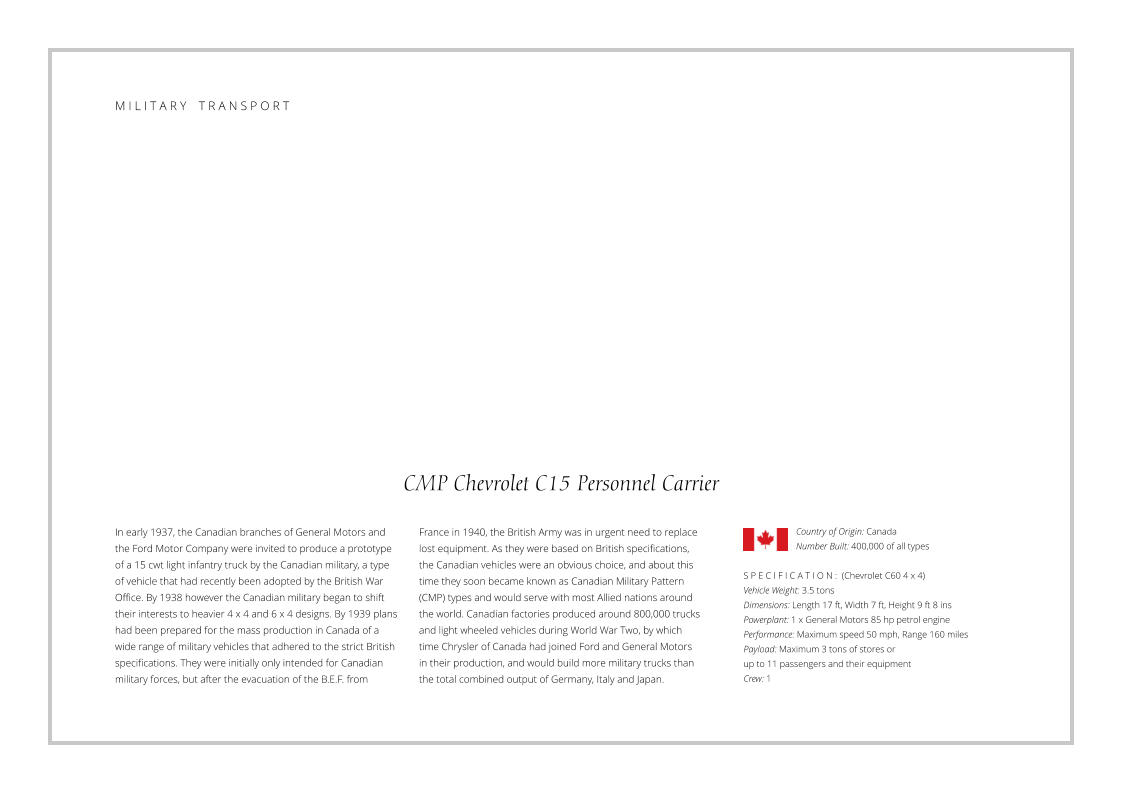

Scroll down to see all the illustrations on the page








Pages






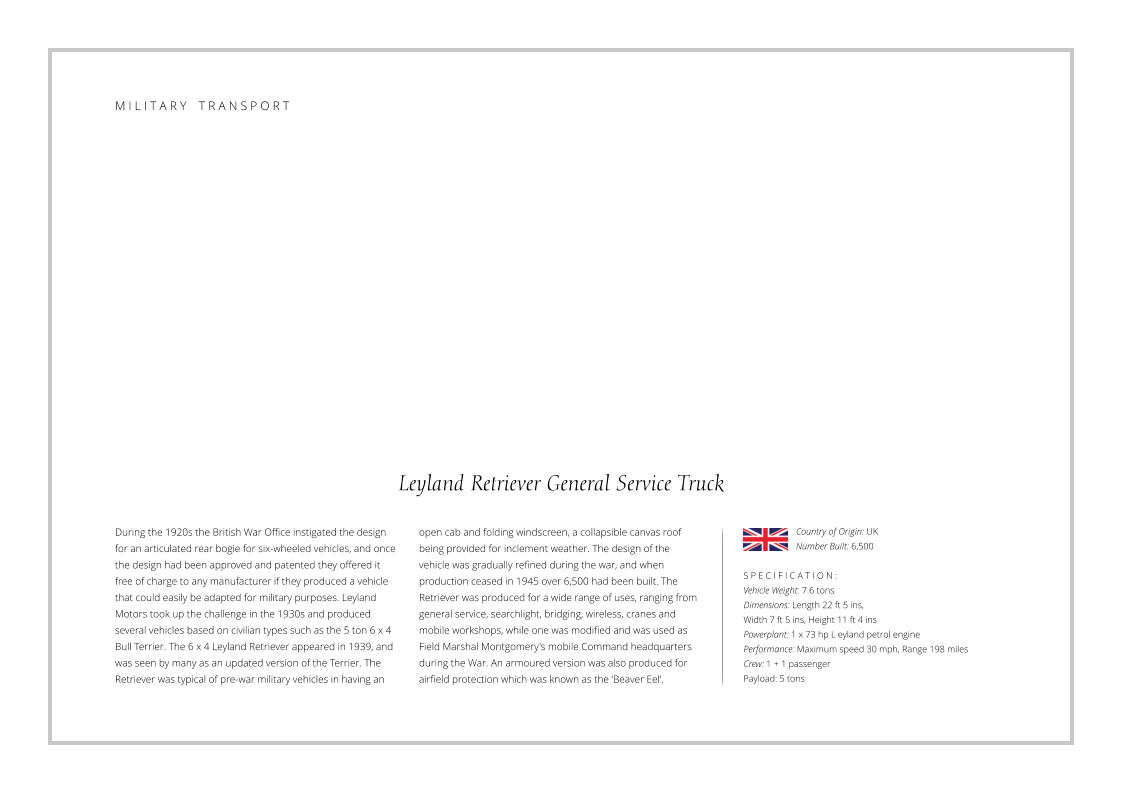
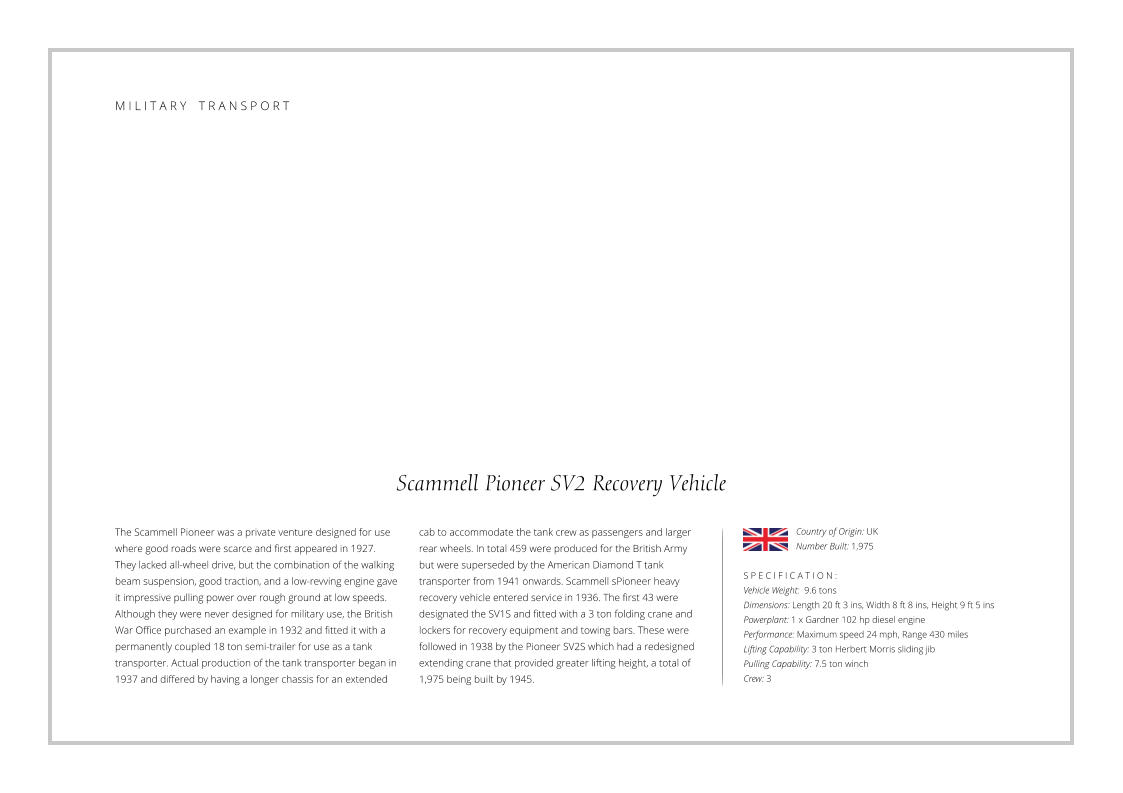
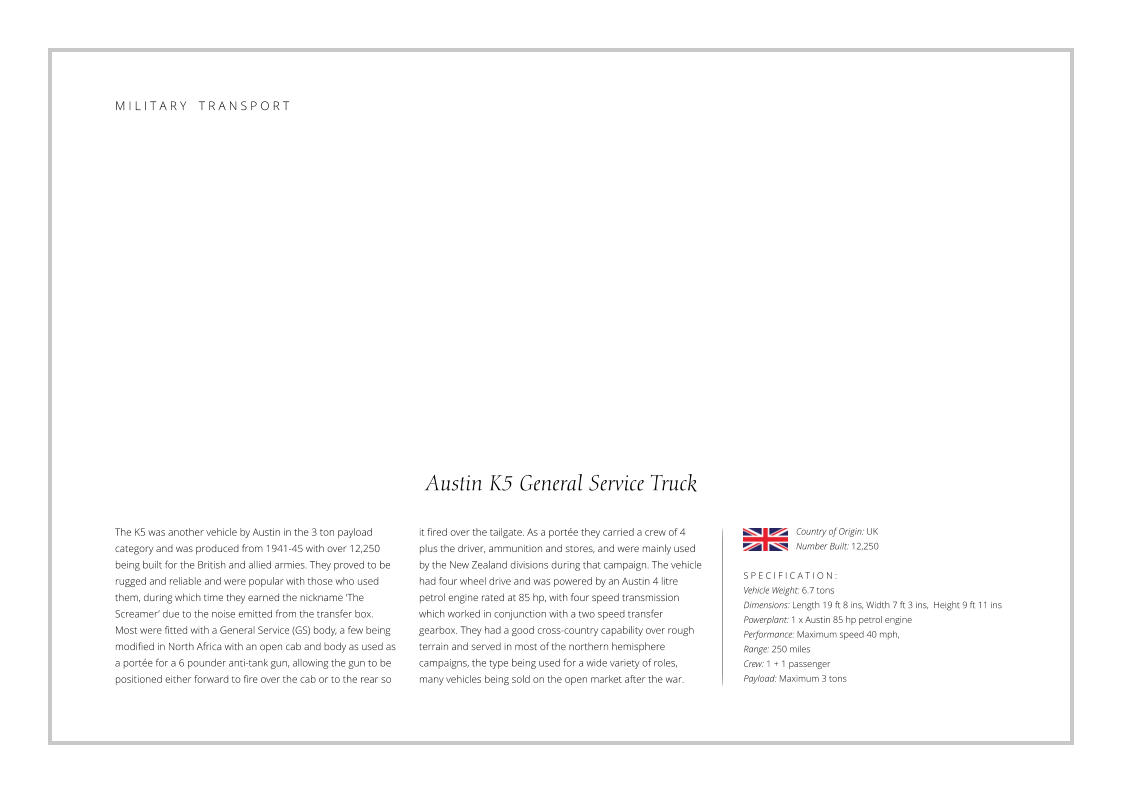
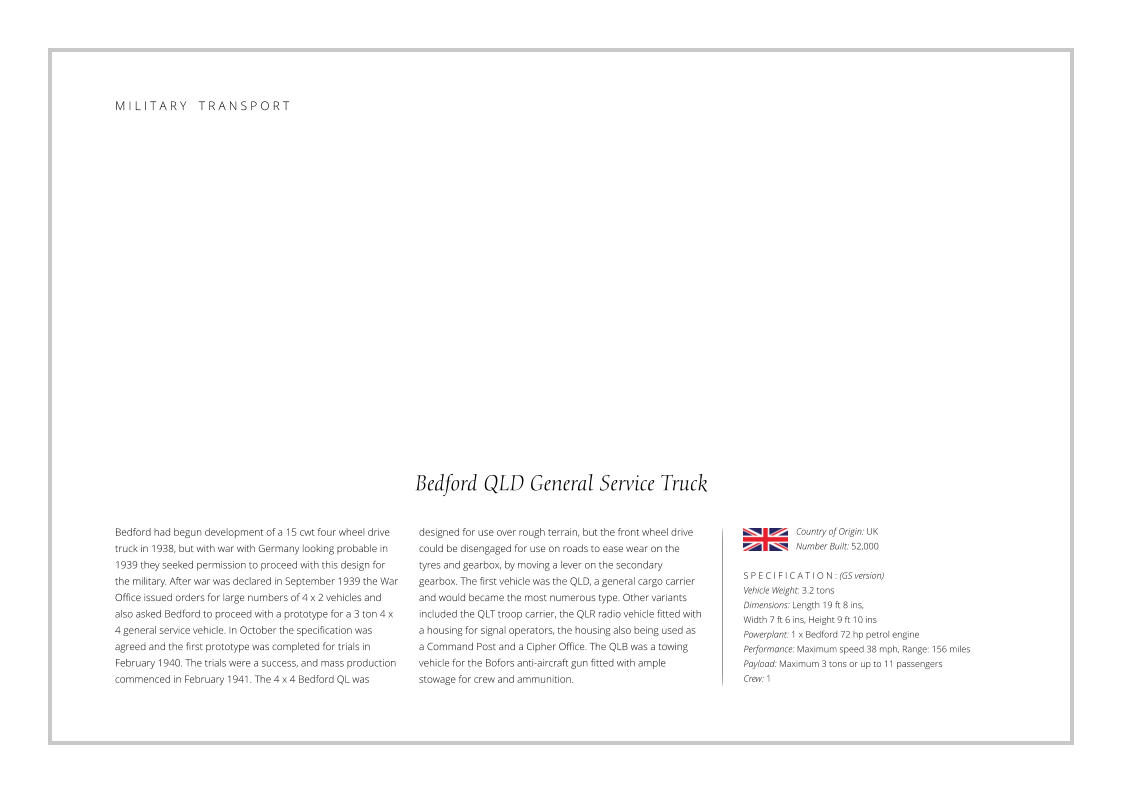
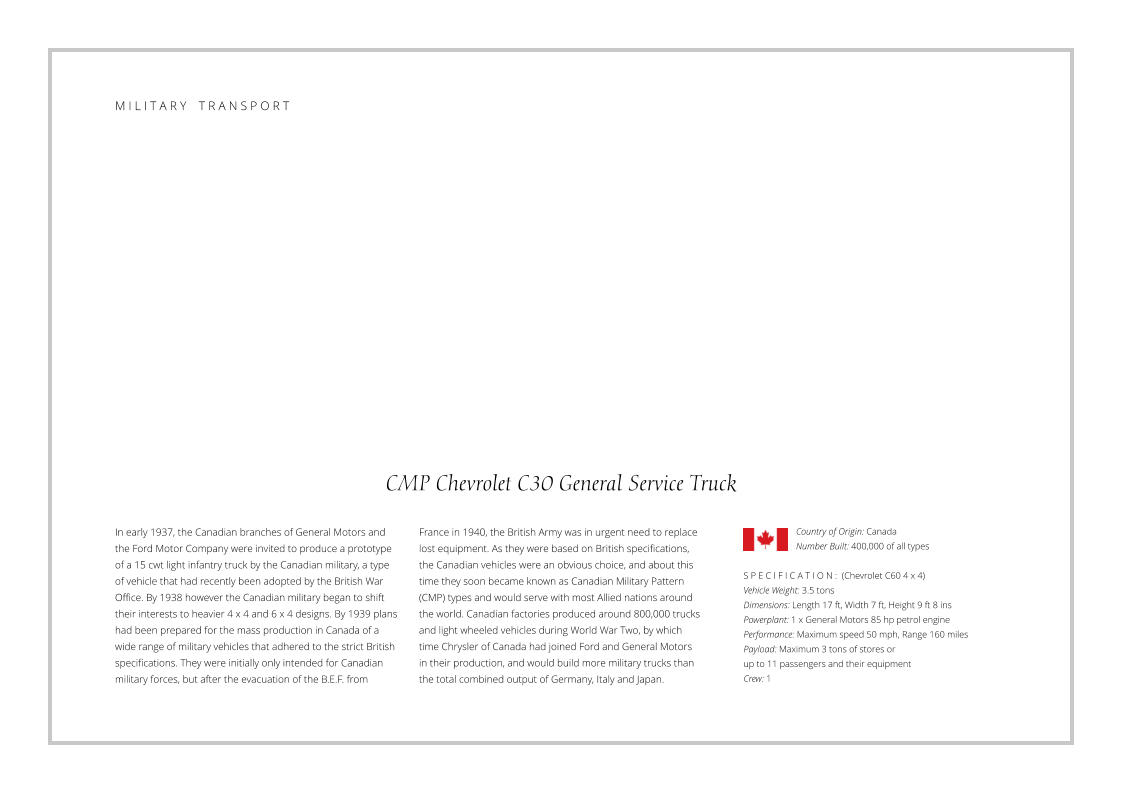
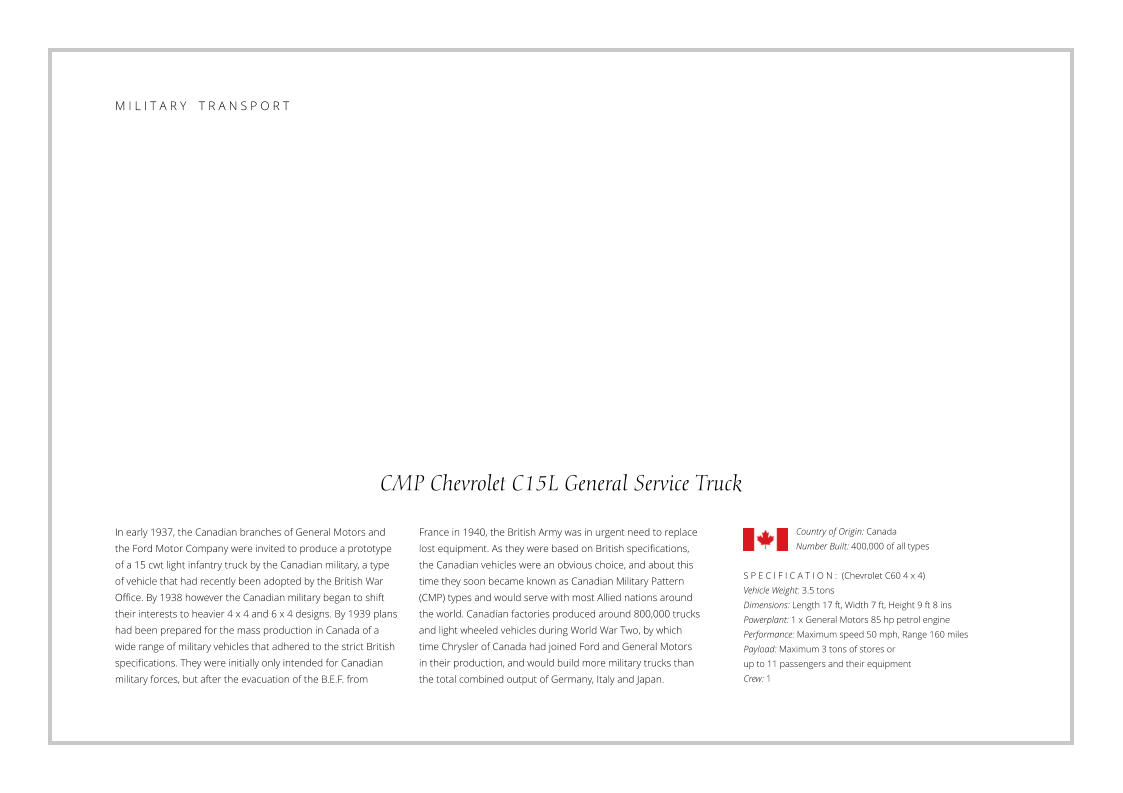
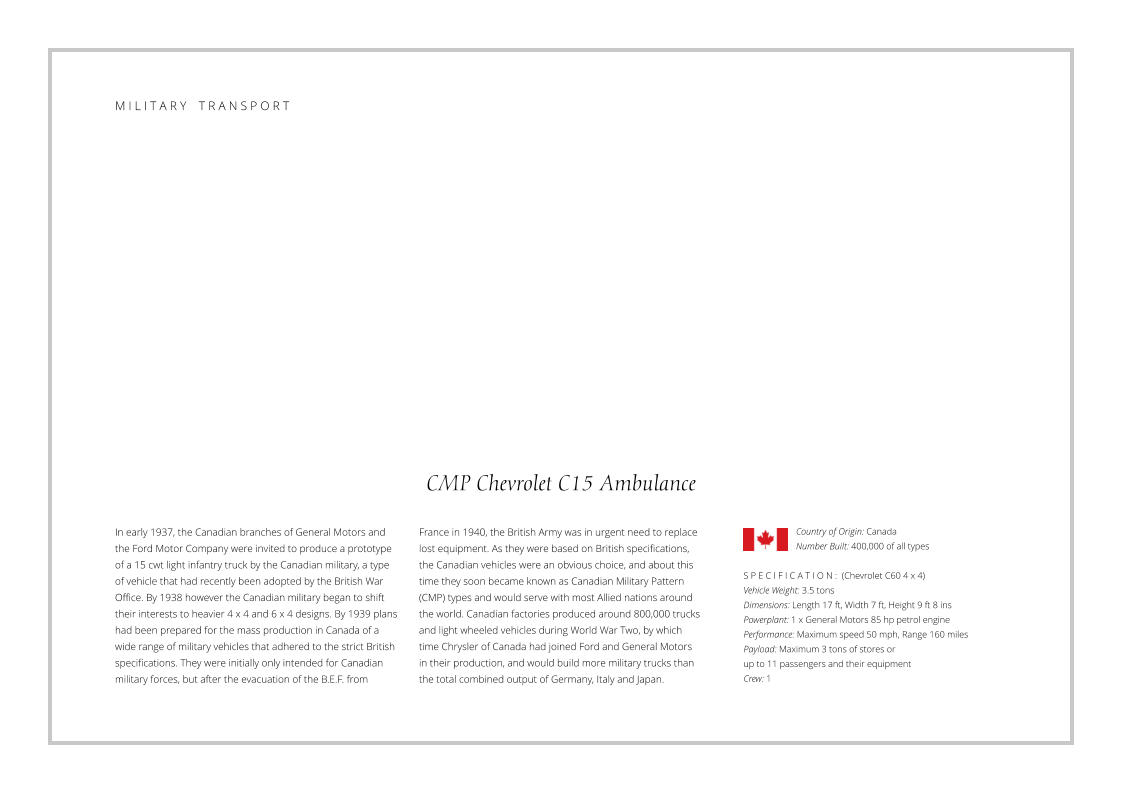
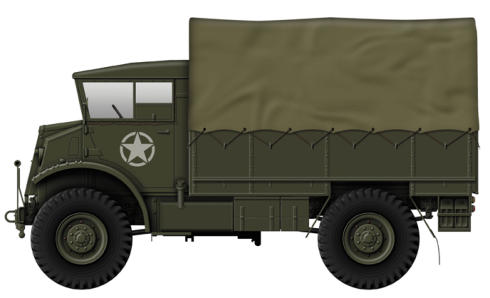
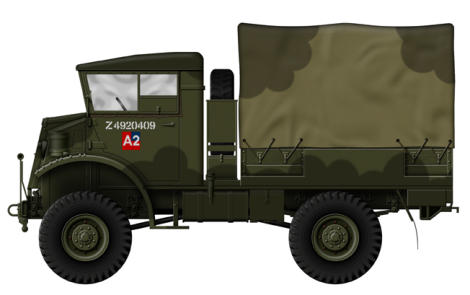
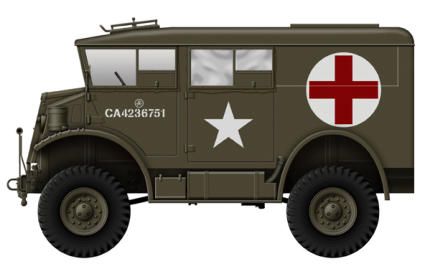
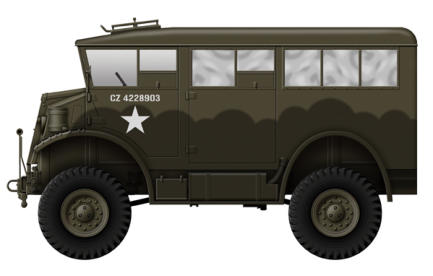
Austin K2/Y Ambulance
In early 1939 Austin received an order from the government in
to turn over all their manufacturing facilities to the production
of transport vehicles. The design for a range of vehicles was
prepared which consisted of two basic models, the K2 and K3
with a load capacity of two and three tons. Production of the K2
began in 1940, with the best known vehicle being the K2/Y
ambulance, of which around half of the 27,800 vehicles built
being this type. They were the most widely used ambulance in
World War Two, and apart from the British Army, were supplied
to Russia, the U.S.A. and other Allied forces. The ambulance
S P E C I F I C A T I O N : (K2/Y)
Vehicle Weight: 3.1 tons
Dimensions: Length 18 ft, Width 7 ft 5 ins, Height 9 ft 2 ins
Powerplant: 1 x Austin 60 hp petrol engine
Performance: Maximum speed 50 mph
Range: 280 miles
Crew: 1 + 1 passenger
Payload: 4 stretchers or 10 sitting casualties
bodies were of lightweight construction built over a wooden
frame, while Insulation was incorporated into the body walls
and a heater provided for cold climates. They were classified as
heavy ambulances and designed to carry four stretchers or ten
seated casualties and a medical attendant. The same body of
the ambulance was also the basis for a mobile office and a
loudspeaker van. Most other K2s were supplied as a general
service vehicle, although other types included a workshop, a
power equipment vehicle, and in 1944, the K2/A variant was
produced and equipped as a fire tender for the R.A.F.
Country of Origin: UK
Number Built: 27,800

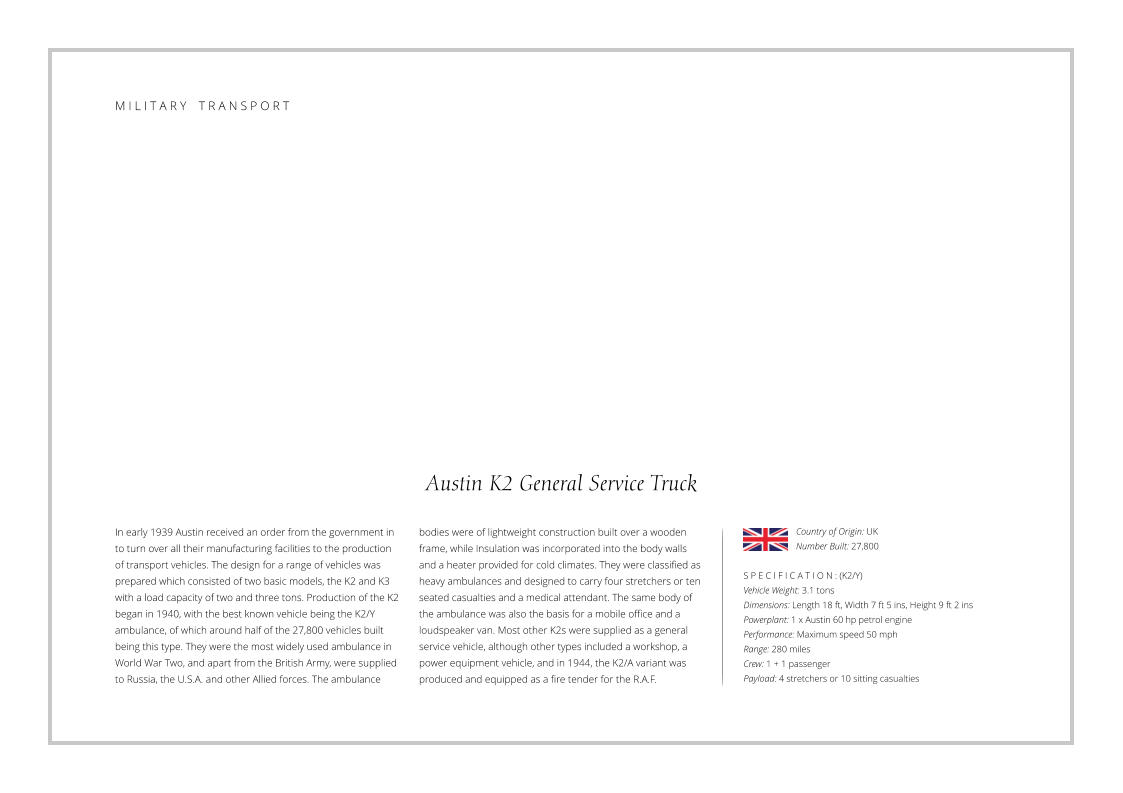
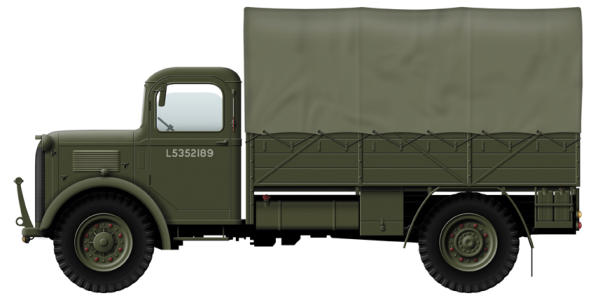
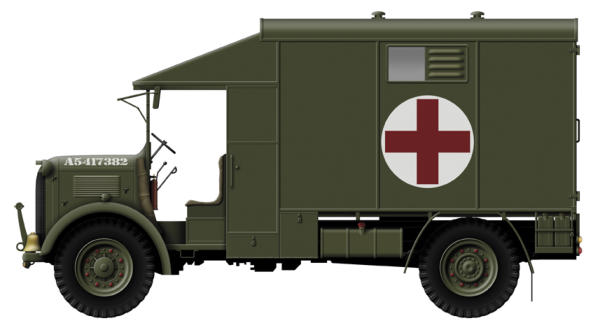
M I L I T A R Y T R A N S P O R T


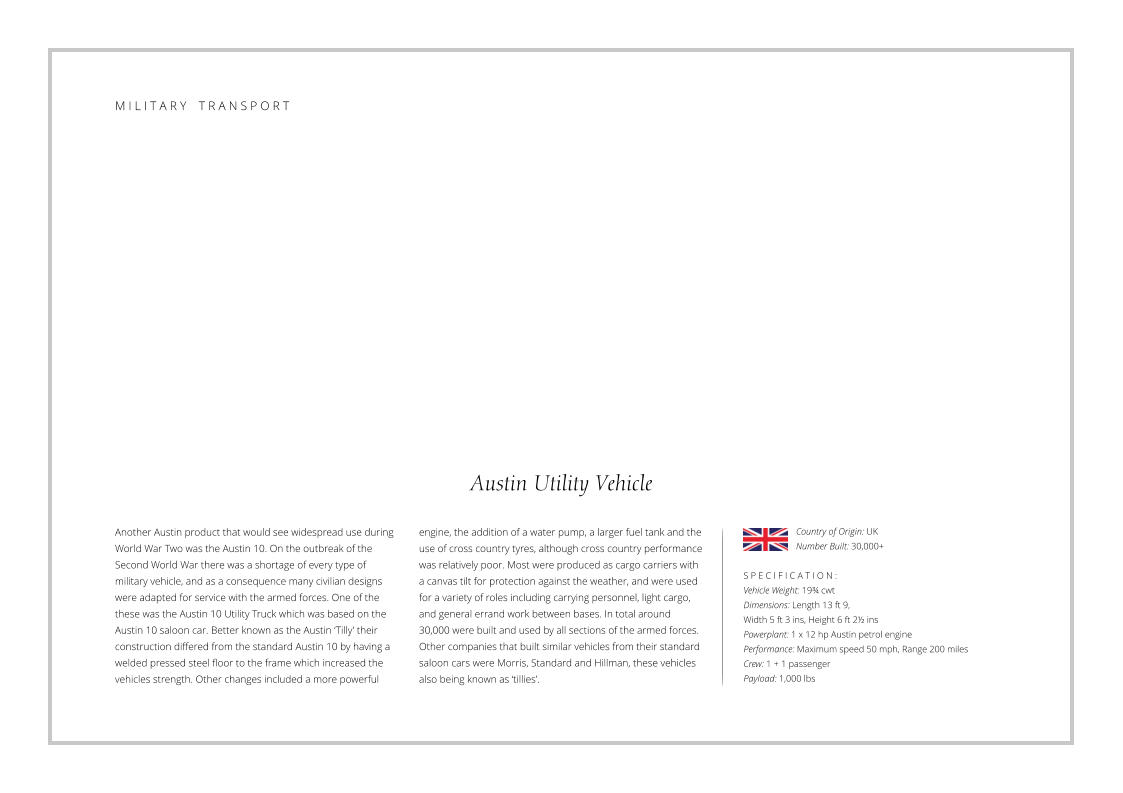


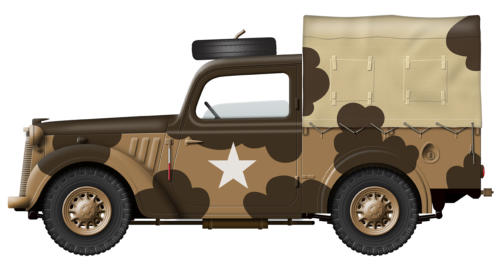
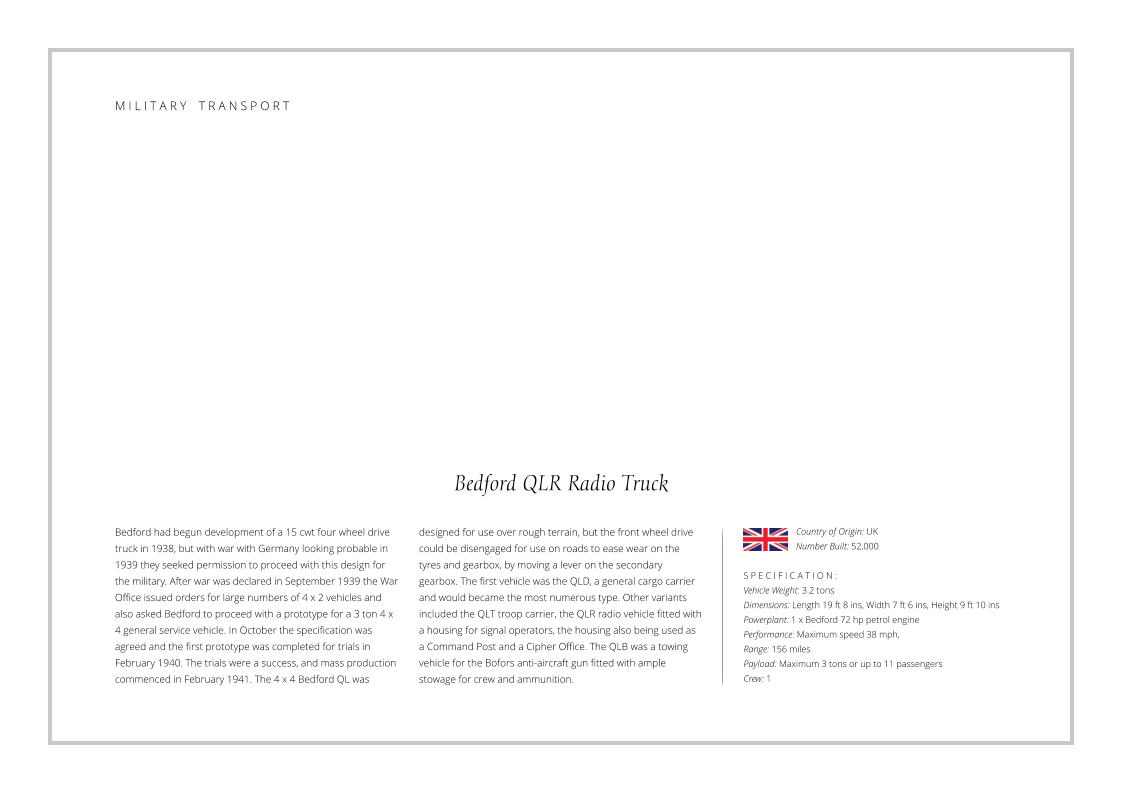
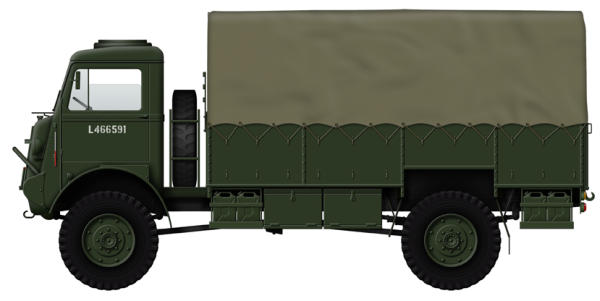
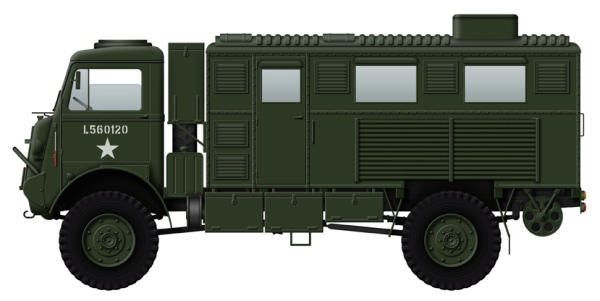
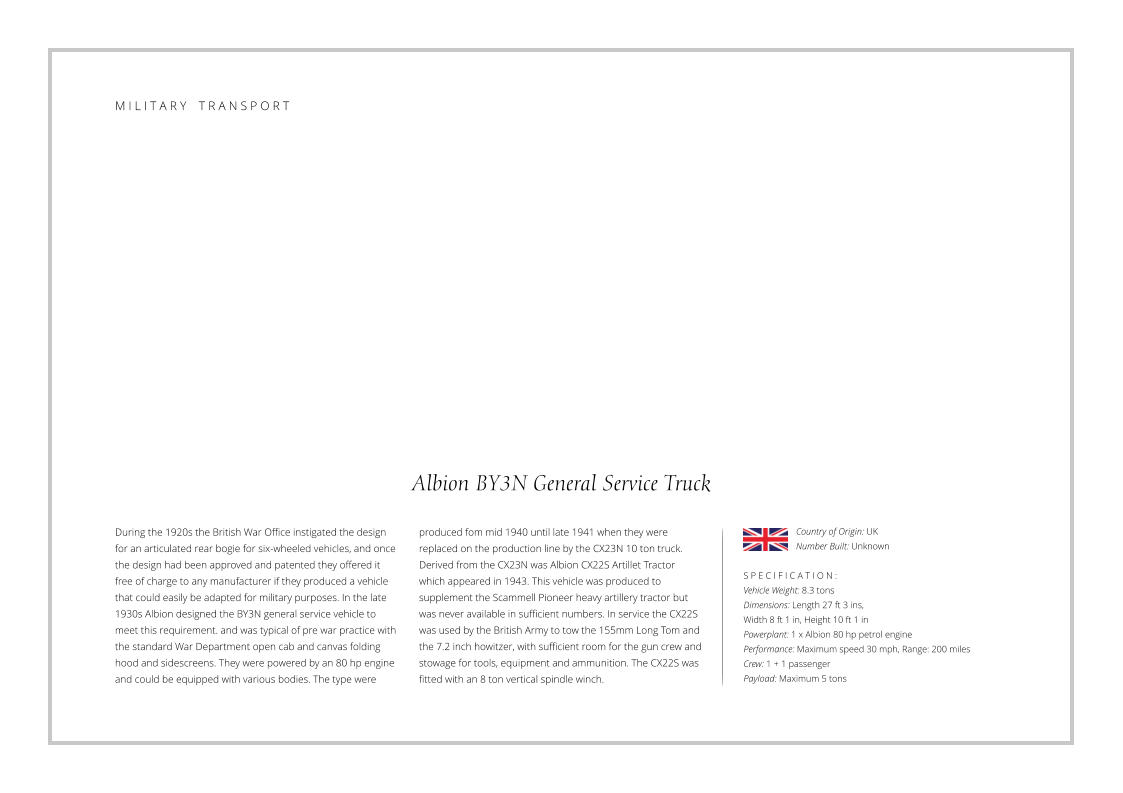
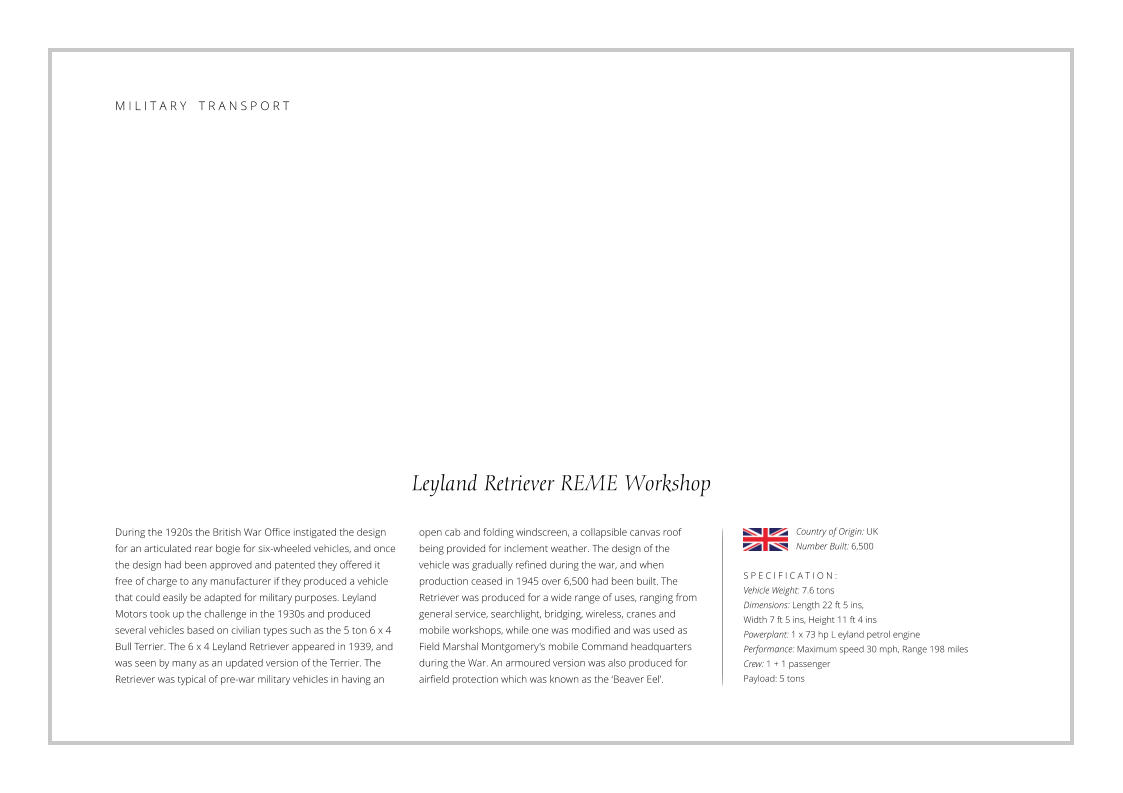

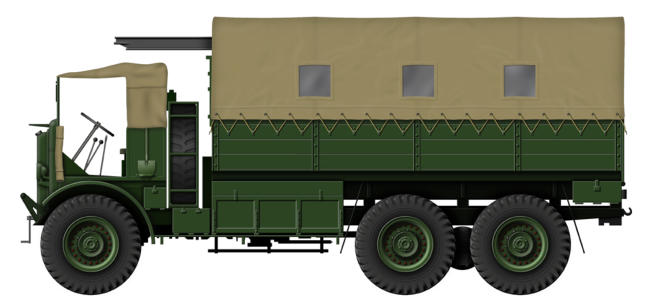
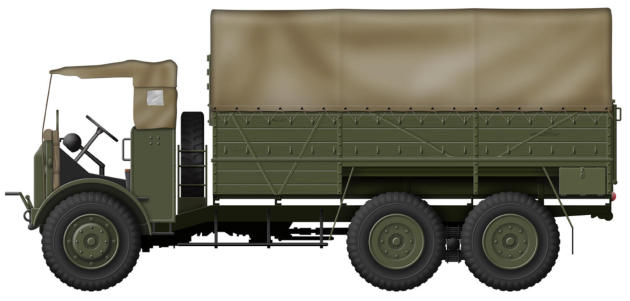
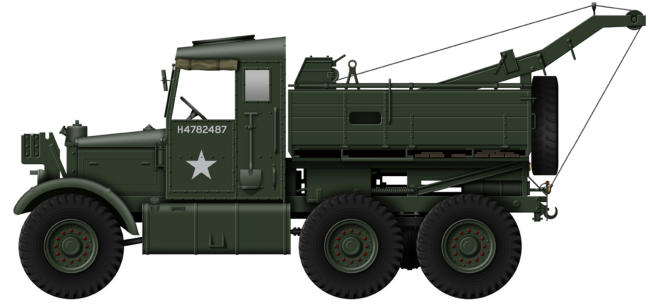








Pages




Alvis Stalwart
The Stalwart amphibious cargo vehicle was developed by Alvis
as a private venture in the late 1950s as an all-terrain vehicle,
and was based on the company’s Saracen 6 x 6 armoured
personnel carrier chassis. The vehicle was powered by a Rolls-
Royce B81 petrol engine that developed 220 hp, drive being
provided to all six wheels which gave it an impressive cross-
country performance. The Stalwart was fully amphibious with
the minimum of preparation, and in water had a speed of over
six knots, propulsion in water being provided by two waterjets.
The cab was entered through the roof and had seating for the
S P E C I F I C A T I O N :
Vehicle Weight: 9 tons
Dimensions: Length 20 ft 10 ins,
Width 8 ft 5 ins, Height 7 ft 7 ins
Powerplant: 1 x Rolls-Royce 220 hp petrol engine
Performance: Maximum speed 40 mph,
Maximum 9 knots in water, Range: 510 miles
Crew: 1 • Payload: 5 tons
driver and two passengers, the driver being seated in the
middle. The Stalwart had a maximum payload of 5 tons (11,000
lbs) which was carried in the cargo area behind the cab, this
being fitted with large drop-down panels with waterproof seals
on either side and a drop-tailgate that could be covered with a
canvas cover fitted on raised supports. The Mk 1 Stalwart could
also be used as a troop carrier and could carry thirty fully
equipped troops, while the vehicle had a towing capacity of 10
tons and could be used to pull a trailer or an artillery piece
within that weight.
Country of Origin: UK
Number Built: 1,275
M I L I T A R Y T R A N S P O R T

